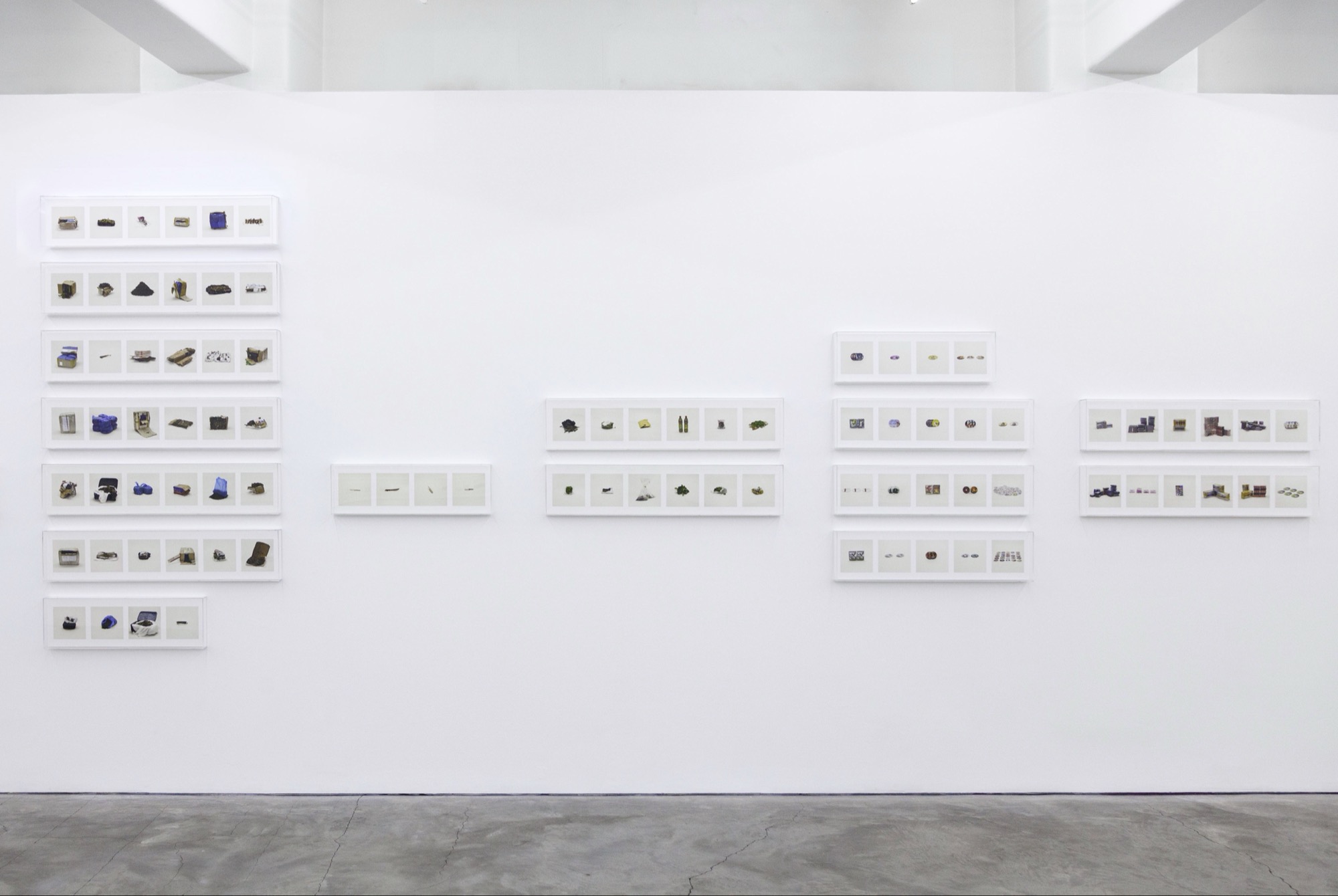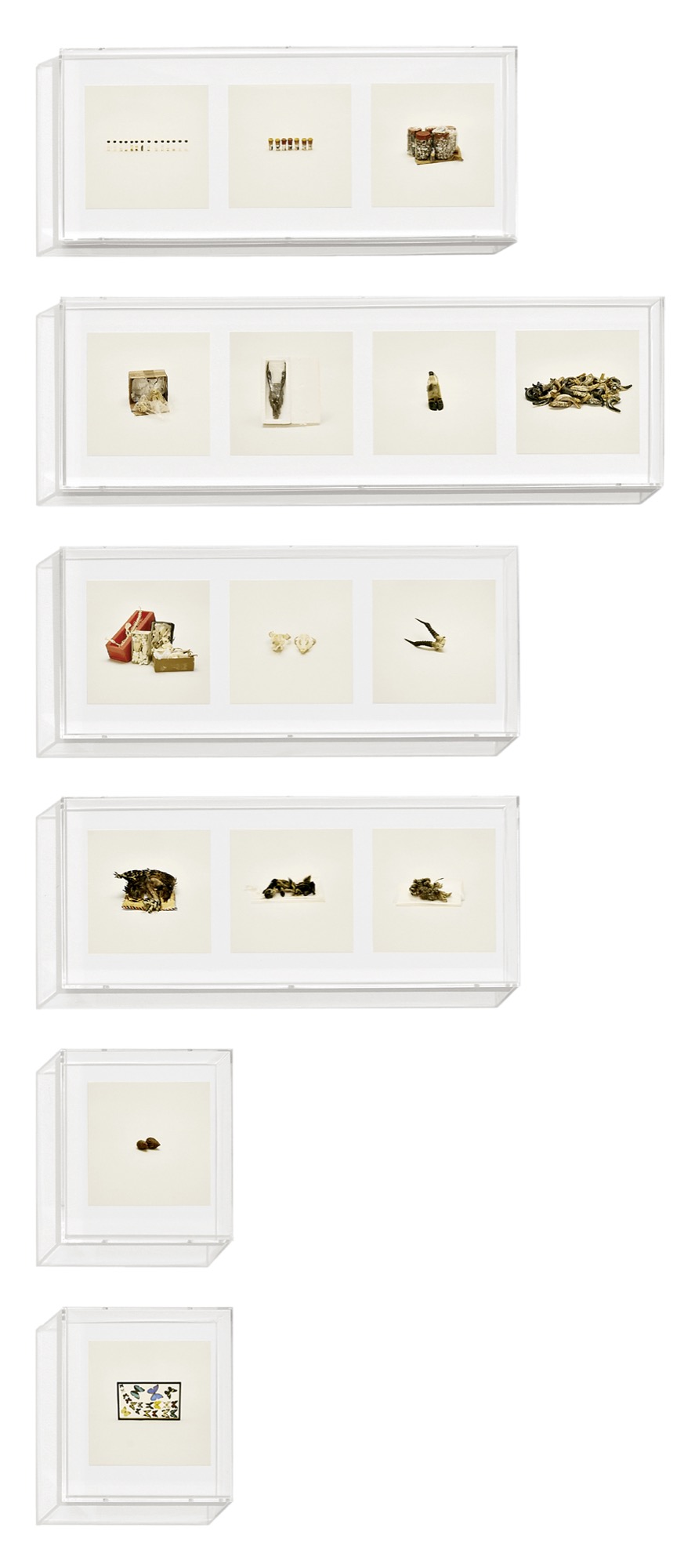Taryn Simon: Contraband
Chelsea Hopper
In late November 2009, American artist Taryn Simon photographed objects detained or seized from airline passengers and express mail entering the U.S. from abroad. To do so, Simon spent five days, 24 hours per day at both the U.S. Customs and Border Protection Federal Inspection Site and the U.S. Postal Service International Mail Facility, both located at John F. Kennedy International Airport (JFK) in New York.

Simon photographed each object on a neutral cream background that highlights the erasure of environment and context. Simon has described this photographic space as a 'non-place'– a term coined by French anthropologist Marc Augé. There are two readings to be made here. First, Augé uses it to account for places like airports and hotels that are not personalised spaces or places which are invested with a subjective identity—in this case, JFK. Second, Simon has utilized a neutralised photographic backdrop to act as a referent to the newfound decontextualized space where these objects float in a space of no clearly defined identity. It is as though Simon created another world for these objects to inhabit, an allusion of sorts to where their path of material life gets documented, resting in the grasp of American hands.
A collection of these detained or seized objects is captured (both physically and photographically) in their failed, short-lived life as contraband. Documentary photography has the capability to have both a recording function and revealing function. Simon employs this twofold function in Contraband, 2010, the series of photographs taken at JFK over those five days, which is being exhibited for the first time in Australia at Anna Schwartz Gallery, where we are privileged to see what greed, the illusion of luxury, imitation and oddities look like within this 'non-place', held in one of the world's busiest airports.

A forensic photographic procedure is used to document these illegal imports and how they are smuggled—some shown with the packaging partially torn open like a disappointing Christmas present, or formally arranged in rows or neat piles. There is a kind of comfort in the meticulous ordering of items, especially the Xanax, Rolex watches and pet medication. The effect is similar to the click-bait genre “oddly satisfying videos“—often attracting millions of views—of people and machines doing repetitive tasks with skill and precision. Pastry chefs, calligraphers, industrial machines, baristas and 3-D printers are the common culprits. The care for and control of their display is, of course, no accident: Simon is notable for her rigorously research-driven and labour-intensive practice guided by systems of organisation. This is apparent in a later photographic series, A Living Man Declared Dead and Other Chapters I–XVIII, 2008–2011, a four-year project during which Simon travelled around the world researching and documenting bloodlines and their related stories displaying her subjects in front of similarly isolated backdrops.
The series of photographs that comprise Contraband is arranged alphabetically in clear Plexiglas frames and grouped in taxonomic categories based on a type of contraband. The reasons for confiscation range from counterfeited, prohibited, illegal, undeclared, unlicensed, pirated or accidentally seized. But despite this rigorous ordering system, the act of 'reading' the photographs is a complicated one. Besides pure visual recognition, the only other way to identify clearly the documented objects is by matching images with indexes printed in tiny black vinyl and placed after each group of photographs in order to avoid (I assume) distraction from the photographed objects. The point here is not necessarily to know what the objects are (although this information is given to us) but to look—to really look—at what has been seized. And this is where the fun begins.

Some objects are completely unrecognizable. For me, this was because either I hadn't already developed a strong visual memory of the seized object, or Simon's depiction of it renders it formally illegible. The sheer number of images—1,075—also makes it difficult to connect all of the objects to their type of contraband. I do my best to try and locate the deer penis that is part of “ANIMAL PARTS (PROHIBITED)” by darting back and forth to see where it sits on the list and where it hangs on the wall, but I can't help but stop to see what came before it—an array of colourful bongs. This play between text and object is no inconvenience as a viewer: There is an abundance of strangeness to wrestle with in these isolated, formalised subjects, and in some instances it acts as form of education: I had no idea what heroin looks like, and now I do.
Simon also offers a visual record of substances that take life or dramatically alter it. The packaging is, of course, purposefully deceptive to create an illusion of innocence. GBL, a component of a date rape drug, for example, is contained in large generic car cleaning bottles. There is a visual friction here, between what is shown in the photograph, what we are told they depict (GBL), and what we can visually see. We are allowed to see what the detained object are concealed in, but ultimately, we are prevented from seeing the very thing that has been seized.

This is not the case for all of the contraband. In some instances, the visual friction between text and image is flipped—we can see the substance that is described, but it's distorted in order for it to be smuggled (in this case unsuccessfully). One photograph, for example, from the category “FAT (PROHIBITED)” looks like handfuls of melted dirty UHU Glue poured into a tall plastic drink bottle with the texture reminiscent of old uncooked fish. In another photograph from the category “DAIRY (PROHIBITED)”, a substance that at first glance appears to be organic polenta is actually heavy plastic bags filled with yogurt. The largest collection of seized objects in the series, Khat, a flowering plant containing the alkaloid cathinone, a stimulant said to cause bouts of euphoria, looks about as harmless as the psychedelic mushrooms wrapped in plastic.

There are different levels of risk taken among the plethora of these seized or detained objects. Mail, as Simon has noted in conversation with curator Hans Ulrich Obrist, 'offers up a space for anonymity'. The identifiers (names, numbers, addresses) on the counterfeit checks, money orders, traveller and cashier cheques are also indecipherable perhaps for this reason, too. Yet this applies across the board to all of the photographed contraband—we will never know who has tried to import or smuggle these items. What also springs to mind is who has the audacity to attempt smuggling them as in some instances the consequences can be diabolical. Maybe they didn't have a choice when they were potentially forced against their will to traffic narcotics. Or perhaps their incentive in sneaking through a plastic pitcher bursting with salami was just wanting to devour it after surviving a long flight. Motivations to ship through fake goods—bundles of disguised designer handbags, counterfeit Nike's and fake MAC cosmetics—have an obvious agenda: to make a buck. I'm not sure if smuggling dozens of pirated box sets of Season 4's Lost—a popular American TV series from the mid 2000s—is really worth the effort, but here someone's given it a red-hot go.

It is curious that, almost a decade after its completion, Contraband has finally found its way to Australia. Although Simon is an internationally established artist, she hasn't been widely collected in Australia, nor is she formally represented by Anna Schwartz Gallery—this exhibition has been developed with the support of Simon's New York dealer, Gagosian Gallery. But her work has been exhibited in Melbourne before, perhaps most notably in the Centre for Contemporary Photography's 2010 exhibition Taryn Simon: Hidden and in Plain View, an exhibition curated by Naomi Cass in close connection with former Melburnian Louise Neri, now a director of the Gagosian Gallery and a significant figure in the global contemporary art trade.

But there is a political timeliness to this exhibition of Simon's project, separate to the commercial (globalised) imperatives that seem to be driving it. Australia has some of the world's toughest customs and border protection laws. The commercial integrity of our lucrative agricultural and horticultural industries—themselves protected by Australia's geographic isolation—depends on strictly enforced prohibitions that control the importation of virtually any foodstuff into Australia. Yet the series also speaks to the increased levels of human movement across the globe, especially as refugees flee conflict and civil unrest to seek the relative safety of this place—only to encounter a governmental system of border control that equates the control of contraband narcotics and foodstuffs with the control of people seeking safety and humanity. The only item in the series categorised as 'accidentally seized' was someone's immigration application to the US. Contraband, on the other hand, has traversed the global art trade with relative ease.
Chelsea is a curator and writer based in Melbourne.


